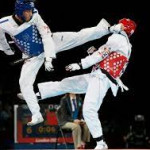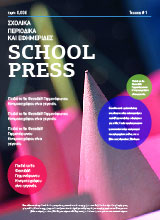By Mitsis Vasileios
What is Taekwondo?
The martial art of taekwondo was created in South Korea in the 1950s as a method of military fighting. Most people are familiar with TKD as a system that emphasizes its primary weapons, which are quick and powerful kicks. Although hand strikes are also included, they are not as significant as kicks.
Since its debut at the Sydney, Australia, Olympic Games in 2000, TKD has been a part of the competition.
What are the different styles of Taekwondo?
There are numerous styles and sub-styles in taekwondo. But in general, WT, ITF, ATA, and Traditional are the four most prevalent styles.
Traditional TKD style
The term «traditional style» refers to the mannerisms used by Korea’s first nine kwans in the 1940s. Tang Soo Do was the most common moniker used at the time by kwans because «Taekwondo» hadn’t yet been coined:
-
Kong Soo Do
-
Tae Soo Do
-
“Tang Soo Do”
The traditional style, which is extremely close to Shotokan karate in terms of techniques and instructional methods, is frequently seen to be the most difficult. In truth, it follows the same principles as Shotokan when it comes to combining kicks and punches, although it leans significantly more toward kicking methods than punches.
It exclusively focuses on fighting for self-defense and preparing a person for a real fight. They get extensive knowledge of the psychological and physical sides of combat through rigorous training. The following techniques are prioritized when it comes to technique:
-
Fast and powerful kicks
-
Direct punching techniques
-
Elbows and knees inside the clinch
-
Basic elements of grappling such as trips and throws
International Taekwondo Federation (ITF)
ITF is more in line with the conventional approach and emphasizes training in self-defense. If you want to test your talents, there is competition, although it is not as significant as in other styles. Students study advanced self-defense techniques as well as how to use all of their limbs as weapons in a fight.
ITF’s rules are comparable to those of World Taekwondo (WT). The only significant distinction is that ITF allows you to use hand strikes to hit the head. Punches to the head are not permitted for children under the age of ten, though. Additionally, because the action restarts after each point, sparring cannot continue.
The following is how points are awarded in tournaments:
-
1 point- for a direct hand hit to the body, a kick to the waist, or an airborne head or foot strike.
-
2 points- for a high-section kick, a hand attack in midair while standing on both feet, and a jumping mid-section kick.
-
3 points- for Jumping kick to the high section
Kukkiwon / World Taekwondo (WT)
The majority of contemporary WT schools place a strong emphasis on competition and educating students to win matches using a point-fighting system. Students are taught how to score points by combining quick footwork with a variety of quick and precise kicks that target the upper body beneath the neck. There is minimal to no instruction in self-defense.
The point-fighting rules are as follows:
-
1 point - for a punch to the trunk protector
-
2 points - for a kick to the trunk protector
-
3 points - for a kick to the head
-
4 points- for a turning/spinning kick to the trunk protector
-
5 points - for a turning/spinning kick to the head
What style of taekwondo is in the Olympics?
The World Taekwondo (WT)-recognized Kukkiwon style is acknowledged as an Olympic-approved form. The event made its Olympic debut as a demonstration event in 1988 at the games held in Seoul, South Korea, and again in 1992 at the games held in Barcelona, Spain. Finally, it made its Olympic debut in 2000 at the Australian-hosted.




